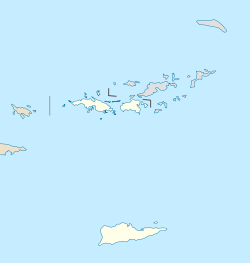History
The land on which Mary Point Estate is located was originally held by Danish West India and Guinea Company officials during the early years of Danish settlement. Not being prime land for planting, the land was held until new settlers needed property. The van Stell family was the first controlling landholding on Mary's Point. [2]
In the aftermath of the 1733 slave insurrection on St. John, Franz Claasen was deeded the Mary's Point estate for alerting the family of the rebellion and assisting in their escape to St. Thomas, a nearby island. Franz Claasen's land deed was recorded on August 20, 1738, by Jacob van Stell. Claasen was the first "Free Colored" landowner on St. John. [2]
Augustus Kragh and the Grancis family were owners of the Mary Point Estate during the late 18th century. Hans Hendrik Berg, a governor and president of St. John and St. Thomas, was an owner of the Mary Point Estate during the 19th century. During this time an L-shaped factory and the one-story Great House were constructed on the property. In addition to the Great House, a servant's quarters, farm building, and cemetery remain. [3]
The St. John Historical Society recorded Mary's Point as a cotton plantation, but noted that sugar was grown there in the 19th century. [2]
This page is based on this
Wikipedia article Text is available under the
CC BY-SA 4.0 license; additional terms may apply.
Images, videos and audio are available under their respective licenses.











